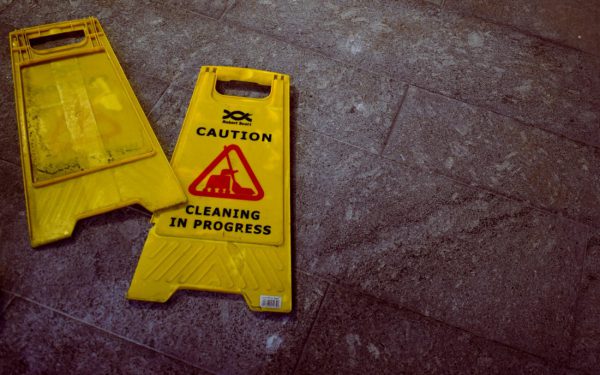Renting a property for the first time can be a daunting experience, but moving out of the family home and establishing your own household is also incredibly exciting. Hunting for a rental property you love is one of the fun parts, but once you find something you like, you need to get serious and be well-prepared to secure the place. This guide provides useful tips for first time renters, from preparing applications to setting up your new home.
Many first-time renters worry they won’t be able to secure a property without rental history, but remember that every tenant was a first-time renter at some point. Successfully securing a property as a first-time renter is a matter of being organised and submitting your application early to have the best chance at beating out other potential tenants.
Keep in mind the landlord and their property manager want to choose the tenant they think is most likely to pay rent on time, take good care of the property and comply with the terms and conditions of the lease. Don’t forget too that property managers and landlords may look at your social media accounts before making a decision, so first time applicants should definitely take a look at their profiles from that perspective. As long as you choose the right property, are well-prepared and timely with your application, there’s no reason why you can’t secure a great first home.
Prepare key documents and organise your references
Ensure you have digital versions and spare physical copies of all the documents you need to apply for a rental property. This includes multiple forms of identification (e.g. drivers licence/learners permit, birth certificate, passport), payslips and phone bills. These prove who you are and show you have a stable income. Create https://1form.com/ in the case that is the preferred application method of the real estate agency you apply with.
References are also especially important for first-time renters. Organise this before any inspections and let them know that a property manager or landlord may call once you’ve submitted an application. As a first-time renter, you do not have a rental history, so it’s important to choose referees who are credible and relevant such as your manager or boss.
Attending inspections
Nice properties in popular suburbs can have a queue forming outside well before the agent arrives, So make sure you’re on time when attending inspections or even 5 to 10 minutes early. You want to be one of the first through the door. If the real estate agent prefers physical rental applications (where not in conflict with COVID-19 restrictions), have a completed application ready to hand to them at the inspection.

Follow up afterwards
After you’ve submitted your application, it’s nice to follow up with the agent with a brief thank you call or email and let them know you really like the property, however, don’t come across as too pushy or impatient, just make it clear you’re interested in the property and look forward to hearing from them. A nice follow up can keep you at the top of their mind as they go through the applications and make a decision.
You’re accepted!
It’s thrilling to have your application approved for your first rental property, but there’s still some important due diligence to keep in mind. First and foremost, looking over the residential tenancy agreement. Commonly referred to as a lease, this is a legally binding contract between you and your landlord. It will include information such as:
- The name and address of the tenant and the property manager/owner
- The length and type of tenancy
- Start and end dates of the tenancy (or whether it is periodic)
- How much rent is and how to pay it?
- The amount of bond required
- What the tenant and property manager/owner can or cannot do
- Any special terms e.g. whether pets are allowed
- Other conditions and rules set by the property manager or owner
You should receive the residential tenancy agreement before paying any rent or committing to the tenancy. Make sure you carefully read it, ask any questions you have and feel comfortable abiding by its terms and conditions before you sign it.
What is a bond?
When signing the residential tenancy agreement, you will be asked to pay a bond. This is a deposit that serves as security for the landlord in case you don’t meet the terms of your lease. Your landlord may be able to claim some or all of the bond for cleaning, repairs, or replacement of missing items at the end of your agreement. The bond is a separate payment to the rent, and you cannot use any part of the bond as rent at the end of your tenancy.

What to expect before moving in?
While real estate documentation can vary from state-to-state, you should generally expect to receive the following before you move in:
- A copy of the residential tenancy agreement
- A copy of the bond lodgement form
- Receipt for the initial rent, bond, and any lease fees
- Keys and garage/parking access information
- Information booklet about renting in your state or territory
- Condition report for you to check, complete and sign.
Completing the condition report
Before you move in, the landlord or property manager prepares a condition report. This should detail the general condition of the property including fittings and fixtures. Carefully check the condition report and ensure it includes all existing damage or issues with the property. Add anything that isn’t included yourself and take accompanying photos to provide as a record of the property’s original condition.
Inspections are just routine
Ranges First National agents always carry out a periodic inspection of the property. This will occur at the first 3-month mark followed up by 6 months or once a year depending on the length of the tenancy. Inspections are conducted to ensure the property is well cared for and to discuss any routine maintenance or repairs that may need to be carried out.

Don’t forget the fun part!
Now that you have a good understanding of all the important information, don’t forget the fun part – making your new rental property your own. There are lots of different ways you can make the place more homely. You can put some art up on the walls, decorate the place with lots of nice indoor plants or choose furniture that showcases your personality. Of course, what you can do depends on the type of property and what you’re allowed to do with it, but there’s always plenty of room for creativity!
Don’t forget for support and advice along the way you can always contact your local First National Real Estate Agent. Visit the links below for further information and other helpful references relevant to your state government and territory:




